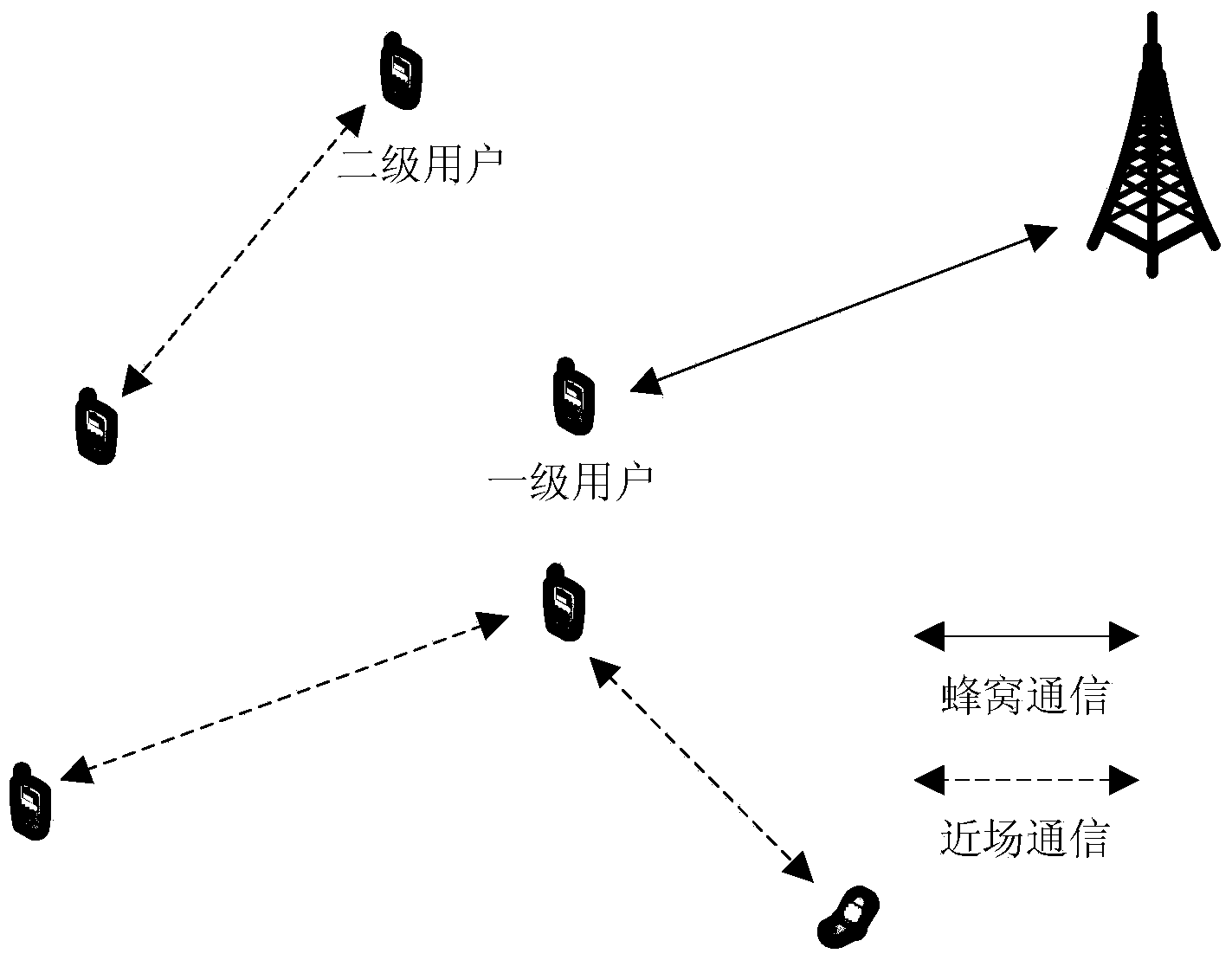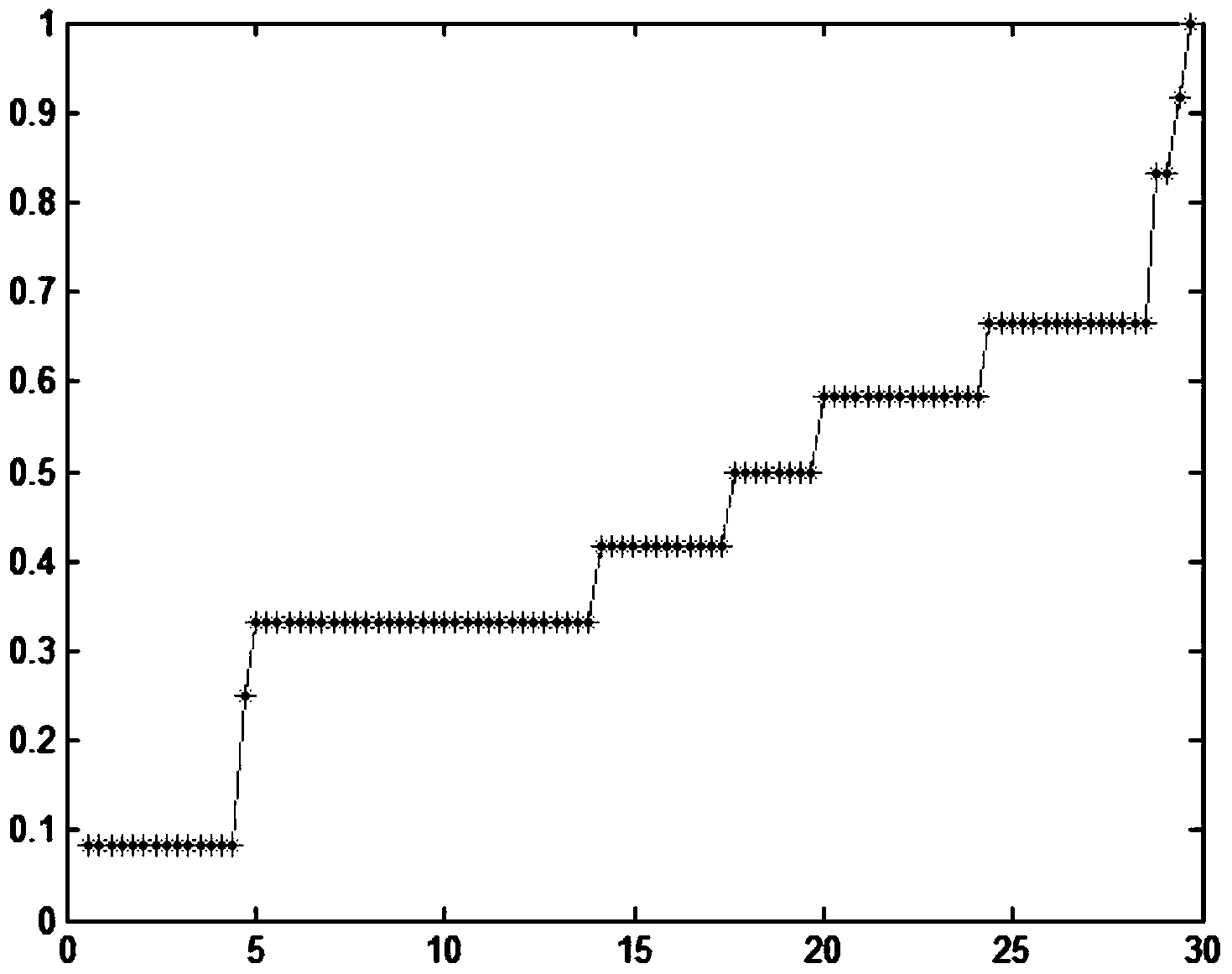Second-stage user dynamic power control method for near field communication or D2D communication
A second-level user, near field communication technology, applied in the field of communication, can solve the problems of node access random network topology dynamic change control difficulty and other problems, and achieve the effect of reducing control difficulty and control overhead.
- Summary
- Abstract
- Description
- Claims
- Application Information
AI Technical Summary
Problems solved by technology
Method used
Image
Examples
specific Embodiment approach 1
[0040] Specific Embodiments 1. A two-level user dynamic power control method for near field communication or D2D communication. In a near field communication network, it is implemented by the following steps:
[0041] Step 1. Initialization: the main system obtains the two-dimensional coordinate information of each node (including primary and secondary nodes) and the channel state information reported by each node;
[0042] Since the frequency points used by the first-level users are determined, each second-level node can establish a deterministic mapping relationship between the same level node and its frequency points Mainly affected by the distance between nodes;
[0043] After initialization, for each secondary node, the main system can calculate its corresponding mapping relationship set The elements in the set are
[0044] Step 2. Assume that the transmit power of each node is constant, which is the maximum power generated by the system. According to the possibilit...
specific example
[0056] Specific example: the first-level user set C has 5 elements, the available frequency point set F has one-to-one correspondence with the elements in set C; the candidate second-level user set D has 10 elements.
[0057] 1), initialization phase
[0058] Calculate the corresponding relationship between the elements in the set D and the elements in the set F, the formula is as follows:
[0059] μ f j i = 0.5 × ( 1 - e - ( d ij d min ) α ) + 0.5 ...
PUM
 Login to view more
Login to view more Abstract
Description
Claims
Application Information
 Login to view more
Login to view more - R&D Engineer
- R&D Manager
- IP Professional
- Industry Leading Data Capabilities
- Powerful AI technology
- Patent DNA Extraction
Browse by: Latest US Patents, China's latest patents, Technical Efficacy Thesaurus, Application Domain, Technology Topic.
© 2024 PatSnap. All rights reserved.Legal|Privacy policy|Modern Slavery Act Transparency Statement|Sitemap



